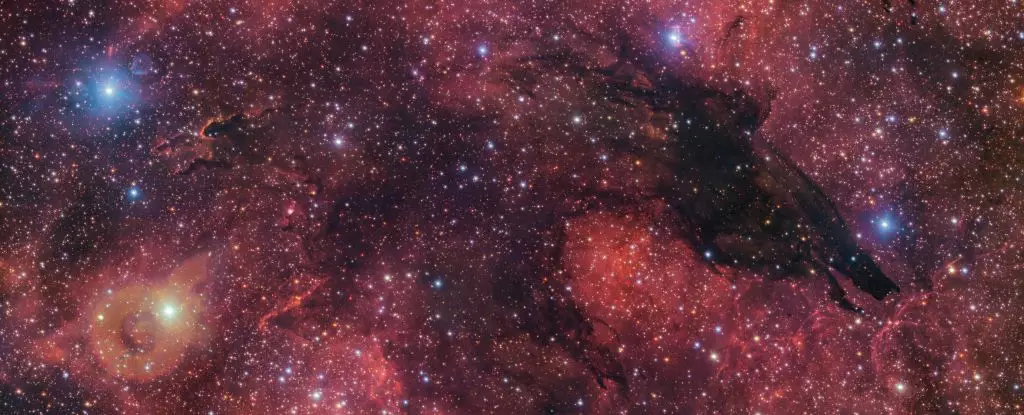In the grand tapestry of existence, mythology and astronomy often intermingle, presenting a narrative that transcends mere scientific inquiry. The Norse myth of Ragnarök speaks of a great wolf, Sköll, destined to swallow the Sun, bringing an end to the cosmos as we perceive it. This vivid imagery serves as a stark parallel to our understanding of cosmic phenomena today, particularly with celestial objects that possess similarly paradoxical qualities. One such captivating entity is the Dark Wolf Nebula, located an astonishing 5,300 light-years from Earth. While the myth paints a picture of destruction, the Dark Wolf brings forth the very fabric of life—new stars.
At first glance, the Dark Wolf Nebula appears as an ominous void in the vastness of the universe, characterized not by luminous energy but by its profound darkness. It is part of a larger region known as Gum 55 in the southern constellation of Scorpius. Contrary to its foreboding appearance, the nebula is a crucible of creation rather than a graveyard of celestial bodies. Classified as a dark nebula, it is dense with gas and dust that absorbs and does not emit visible light, thus remaining hidden from conventional observational methods.
Far from being a void, the Dark Wolf Nebula is a reservoir of potential. Within its inky depths lies the raw material necessary for new stars to take form. Dense clumps of gas and dust within the nebula are subjected to gravitational forces that lead to the formation of baby stars. This process of star formation serves to highlight a fundamental dichotomy in the universe: what seems barren and lifeless on the surface can, in fact, be a bustling nursery of stellar life.
As this primordial material coalesces due to gravitational attraction, it creates pockets of density that begin to attract even more surrounding matter, pulling in gas and dust while increasing its mass. Eventually, when enough pressure and heat build up in these nascent stars, nuclear fusion ignites at their cores, marking the transition from dust to fully-fledged stars. This hidden process unfolds far from the prying eyes of our visible spectra, shrouded in mystery and nested within the dark veil of the nebula.
To study this concealed cosmic phenomenon, scientists employ infrared observatories like the James Webb Space Telescope (JWST), which can penetrate the thick layers of dust to gather insight into star formation activities. Infrared technology enables scientists to observe objects that would otherwise remain obscured in darkness, offering a glimpse into the incredibly dynamic environments where stars are born. However, it is not just infrared observations that provide a full picture; collecting data across varying wavelengths is vital to understanding the multifaceted nature of star-forming regions.
The existence of the Dark Wolf Nebula stands as a testament to the cyclical nature of the cosmos. While the mythological wolf, Sköll, might symbolize cessation, the astrological reality indicates a different narrative: one of beginnings and rebirth. As stars emerge from the dark clouds, they will eventually assert their power. Once they reach maturity, these stars will emit intense radiation and powerful stellar winds, dispersing the surrounding material once again into the cosmos—both enriching and transforming it.
This cycle forces us to reevaluate our understanding of cosmic phenomena. While destruction is often emphasized, the process of stellar evolution highlights a more complex reality. Stars are born, they flourish, and eventually return their materials back to the universe. In this sense, the Dark Wolf Nebula serves not just as a cradle for some of the universe’s most magnificent entities, but also as a poignant reminder of the interconnectedness of all cosmic processes.
As we gaze into the profound darkness of entities like the Dark Wolf Nebula, we are reminded of our own position within the cosmic order. The celestial drama of birth and decay is not solely confined to stars but echoes within our existence as well. Just as myths explore our fears and hopes, the cosmos unveils mysteries that compel us to ponder our purpose and legacy. In embracing both the light and the dark, we acknowledge the beauty of creation—a cosmic dance where, despite the menace of Sköll, the stars endure and thrive, illuminating the boundless expanse of our universe.


Leave a Reply